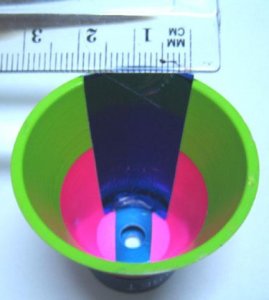strmrdr
Super_Ideal_Rock
- Joined
- Nov 1, 2003
- Messages
- 23,295
also thinking about this another issue with the AGS metric is one directional source of obstruction don''t match the real world.Date: 7/18/2007 2:03:33 AM
Author: JohnQuixote
The AGSL metric is more telling in this case because they include light return values at 0 degress and tilted to 4 compass directions. Jim C from the lab has told me that inside robust t/c/p combos the values in cherry lower half % ranges equal out as soon as you move the diamond because the light-dark ratios reverse themselves. He''s also said much of this is beyond our human cognitive ability to perceive (that for Wink, Alj and Belle) but we''re already nano-spec-ing so I thought what the hey.
Thoughts?
On the finger there are many sources and direction of obstruction.
A painting on a white wall may be an obstruction in the green zone, someones shirt in the red, the person standing beside them in the green and red zones.










300x240.png)